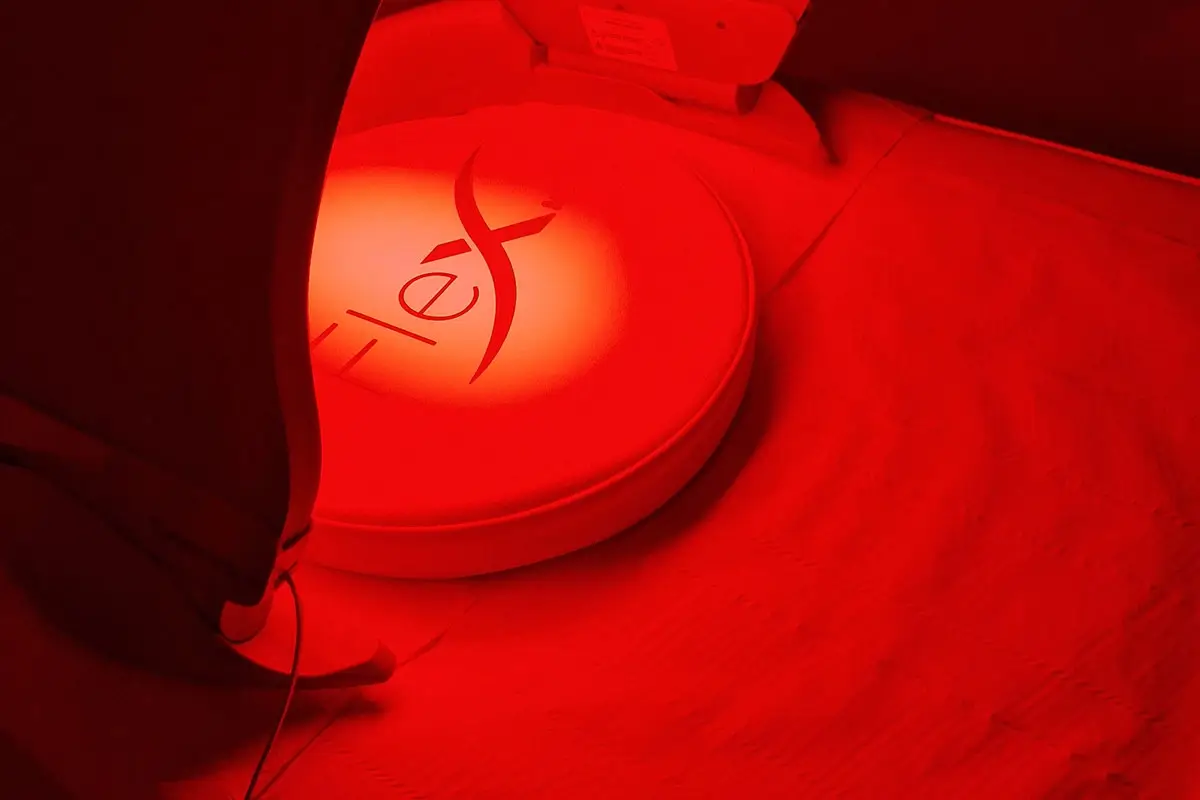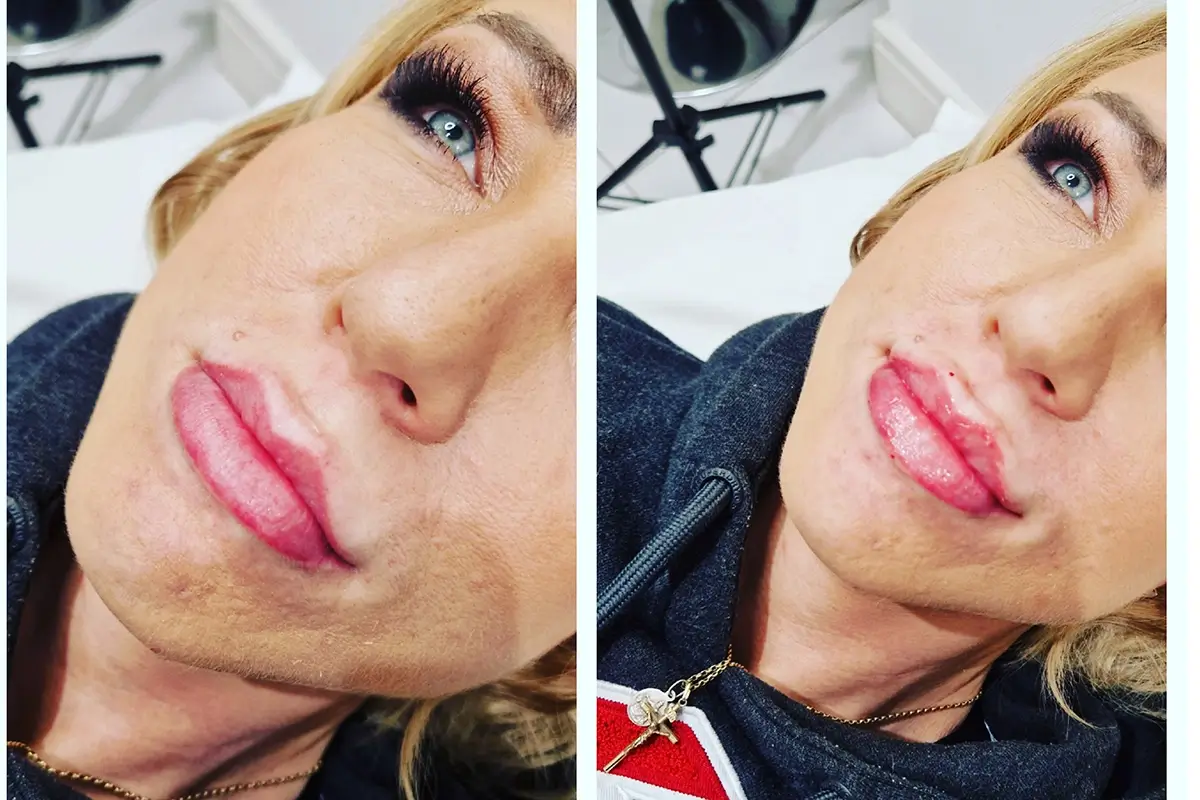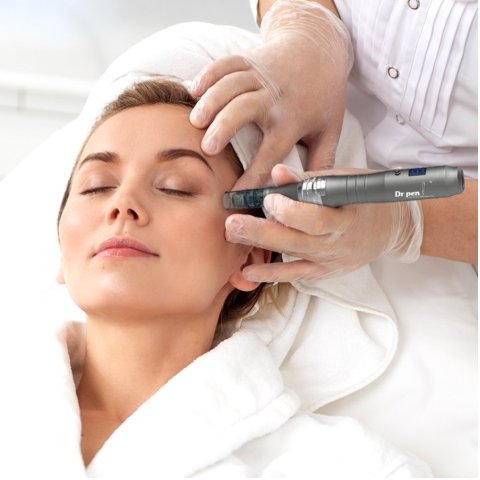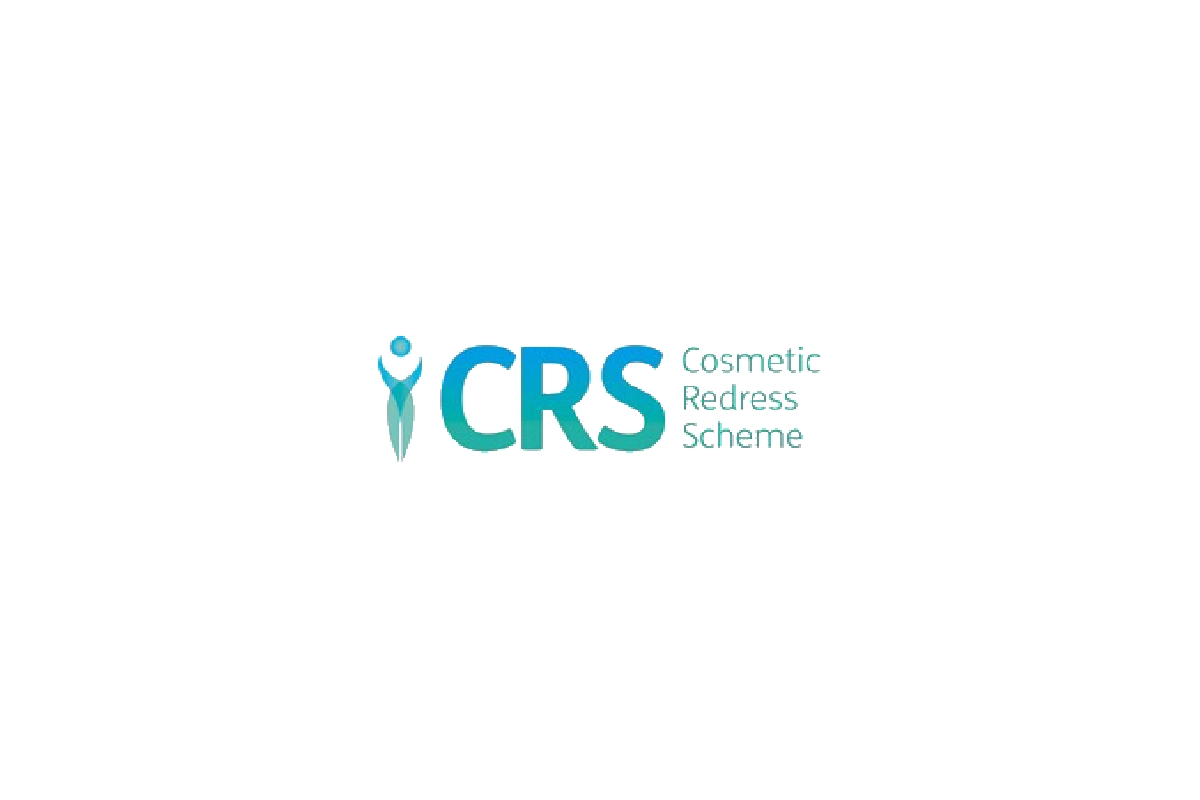
Our Services:
Anastasia Skin Radiance Treatments
Restore luminosity and vitality with advanced treatment for radiant skin.
Illuminate Your Glow
Immerse yourself in the luxury of our skin radiance treatments, designed to unveil your natural luminosity. Our tailored approaches utilize advanced techniques and premium products to address specific skin concerns, promoting hydration, even tone, and a youthful glow. From revitalizing facials to cutting-edge technologies, each session is crafted to enhance your skin’s radiance. Embrace the journey to a vibrant complexion, where beauty meets the brilliance of personalized skin care.
Skin Radiance Treatments
- Dermalux LED Phototherapy Treatment (see price list)
- Chemical Peels/rejuvenating/brightening/clarifying/ (see price list)
- Micro-needling – Dermal Roller (see price list)
- Micro-needling Pen single treatment/course of two/three (see price list)
- Dermaplaning (see price list)
- Dermaplaning with Dermalux LED Phototherapy (see price list)
- Dermaplaning with Chemical Peel (see price list)
Dermalux LED Phototherapy is a non-invasive treatment that uses clinically proven therapeutic light energy to trigger the skins natural rejuvenation and repair processes without pain or downtime. From the first treatment, Dermalux instantly boosts the complexion to restore vitality and glow.
FAQ’s
What is a Dermalux Facial?
Dermalux Flex is an LED Phototherapy Facial for visibly radiant, rejuvenated, refined beautiful skin. Dermalux LED Phototherapy is a non-invasive treatment that uses clinically proven therapeutic light energy to trigger the skins natural rejuvenation and repair processes without pain or downtime.
How often should you have DermaLux?
For optimal results we recommend a course of treatments with sessions ideally 1-2 times weekly. As Dermalux® LED Light therapy does not harm the skin, there is no limit to the number of treatments you can have.
Is DermaLux Safe?
Dermalux® LED Phototherapy is safe and effective for all skin types. It is well tolerated with very few reported side effects. Immediately after treatment skin may feel warm and may appear red, due to the increased blood circulation in your skin.
How does Dermalux Flex LED Phototherapy work?
Our skin can absorb light energy and use it to stimulate or regulate essential cell process. LED phototherapy is the application of beneficial wavelengths from the visible and infrared part of the light spectrum which have proven skin enhancing benefits. Skin cells that are energised function better and can renew up to 200% faster accelerating regeneration and repair.
What are the benefits of Dermalux Flex LED Phototherapy?
Dermalux flex uses unique combinations of clinically proven Blue, Red and Near Infrared wavelengths to boost collagen production, increase hydration, calm redness and irritation and destroy acne causing bacteria. As the light triggers a whole cascade of skin enhancing processes, the benefits continue even after the treatment has finished.
What conditions does the Dermalux LED treat?
Dermalux Flex LED phototherapy is medically CE certified for the conditions of acne, rosacea (red patches), psoriasis, wound healing, and pain relief (muscular skeletal).
What does the treatment involve?
Dermalux Flex is a relaxing, pain free experience with proven mood enhancing effects. Enjoy some luxury me-time as your skin absorbs the energising light to kick start cell regeneration, calm irritation or restore radiance. Each treatment lasts up to 30 minutes and with no downtime, you can simply get up and glow.
What is microneedling?
Microneedling is a cosmetic non-invasive procedure to approve the appearance of your skin. People turn to microneedling (sometimes also referred to as nano needling) for many different types of reasons. Some of the reasons are to improve the appearance of fine lines and wrinkles, even out skin tone, rid themselves of dark eye circles, reduce scaring etc.
What does the microneedling procedure involve?
Microneedling uses tiny needles from a motorised microneedling pen to make microscopic punctures in the skin. The device will be moved around the treatable areas on the body or face. Microneedling is also referred to as Collagen Induction Therapy (CIT). This is because the microscopic punctures created during the treatment (microchannels) trigger a trauma/healing response in your skin. Your skin perceives that there has been a small injury and as a result, floods the tissue with the signal to naturally produce more collagen and elastin to heal the ‘wound’. As the skin heals, skin imperfections soften and even disappear completely with several treatments over a length of time.
Who can try microneedling and is it safe?
Microneedling is a fantastic procedure for anyone who wishes to restore vitality to their complexion and anyone who wishes to heal skin imperfections and fight the visible signs of ageing. Some individuals will need to take greater safety precautions. There are some conditions that will preclude individuals from safely performing microneedling or will mean that microneedling will need to be cleared by a medical professional first. Some of these conditions are eczema, rosacea, contagious skin conditions, active acne, and fungal infections.
Which skincare products are the most effective during and after microneedling?
Skin care products used during and after microneedling (such as serums) work best when applied while all the microchannels that you made are open. Deeper delivery/penetration of skincare products during and after microneedling allow our skincare to work more effectively to achieve its goals. When choosing skincare products to apply after microneedling, stick to the following guidelines:
Opt for products with a high purity of ingredients.
Look for low-irritant ingredients and hydrating ingredients (Hyaluronic Acid is amazing)
Avoid active ingredients (such as AHAs, BHAs, retinols), toners and exfoliants.
Can I get a step-by-step guide to aftercare?
Yes! You will receive full aftercare advice.
What is dermaplaning?
Dermaplaning is a minimally invasive cosmetic procedure for your skin. Your healthcare provider uses a special instrument to shave away the uppermost layers of your skin.
Dermaplaning can help reduce the appearance of acne scars or other skin imperfections by revealing newer, undamaged skin. It can make your skin look younger; though, it doesn’t stop the aging process. Some people also get dermaplaning for hair removal. This is only a temporary fix because your hair will grow back.
Who gets dermaplaning?
You may consider dermaplaning if you have skin concerns such as:
Acne scars or actinic keratosis (scaly skin patches that can lead to skin cancer) dull or dry skin, peach fuzz (light, soft hair on your face), skin damaged by sun exposure, fine lines (wrinkles).
Who shouldn’t have dermaplaning?
Some people with pre-existing skin concerns shouldn’t have dermaplaning. Before getting this procedure, talk to your healthcare provider if you have:
An active case of acne, cold sore (herpes) outbreaks, eczema, moles, freckles, skin tags or other skin growths, psoriasis, skin burns,, such as those from radiation therapy skin rashes (contact dermatitis).
What happens during dermaplaning?
Dermaplaning doesn’t require general anaesthesia, but our nurse might put a numbing cream or spray on your face about half an hour before the procedure. You might feel a scratching or stinging sensation on your skin, but dermaplaning usually isn’t painful. Our nurse uses a special instrument called a dermatome to remove hair and skin cells. The tool looks a bit like an electric razor. The dermatome has a small blade that moves back and forth across your skin. It doesn’t make cuts in your skin, but gently shaves off the top layers of skin. Afterward, they may apply a soothing gel or ointment to your skin to reduce redness, swelling or irritation. The treatment can last anywhere from a few minutes to an hour and a half. The length of the procedure depends on the size of the area that needs treatment.
What happens after dermaplaning?
Your skin will likely be red, swollen and slightly tender after the dermaplaning procedure. Your healthcare provider may recommend over the counter pain medication to help with any discomfort. If you notice swelling lasts longer than a week or worsens, contact your healthcare provider.
What are the risks of dermaplaning?
Dermaplaning is generally considered a safe cosmetic procedure. However, it does carry the following risks: Infection, scarring, such as keloid or hypertrophic (raised) scars, skin discoloration (skin that turns lighter or darker than the surrounding skin).
What are the benefits of dermaplaning?
Dermaplaning can help minimize the appearance of acne scars, fine lines, wrinkles, and dull skin. The procedure can reveal smoother, firmer, and healthier skin.
What can I expect after dermaplaning?
Recovery is different for everyone in the weeks and months after dermaplaning, but you can expect:
After 1 week: Redness and swelling should subside. You may notice enlarged pores or small whiteheads on your skin, which usually go away with the swelling. Don’t shave the treated area. After 2 weeks: A scab may form over the treated area, which falls off. The skin underneath will look tight and pink. It might be itchy. Most people can return to work after two weeks, but you should avoid strenuous activities. After 4–6 weeks: You can gradually get back to playing sports or other activities, but you should stay out of the sun. After 6–12 months: Continue staying out of the sun until the treated area has returned to your normal skin colour.
Will I need multiple dermaplaning procedures?
Some people get multiple dermaplaning procedures to achieve their desired results. However, it’s important for your skin to heal completely between treatments. Talk to your healthcare provider to make sure it’s safe to have additional dermaplaning procedures.
What if I have very deep acne scars?
Dermaplaning may not reduce the appearance of deep or raised acne scars. Some people need more intense treatments, such as laser surgery. In dermaplaning, our nurse shaves away the top layers of your skin, reducing the appearance of scars or signs of aging.
What are Chemical Peels?
A chemical peel is a procedure in which a chemical solution is applied to the skin to remove the top layers. The skin that grows back is smoother. With a light or medium peel, you may need to undergo the procedure more than once to get the desired results. Chemical peels are used to treat wrinkles, discoloured skin, and scars — usually on the face. They can be done alone or combined with other cosmetic procedures. And they can be done at different depths, from light to deep. Deeper chemical peels offer more-dramatic results but also take longer to recover from. A chemical peel is solution applied to the face to remove dead skin cells and stimulate the growth of new cells. The aim is to improve the appearance of the skin – for example, by reducing age spots and evening out skin tone. There are 3 types of peels, called superficial, medium, and deep. Superficial and medium peels are usually safe, as long as they’re done correctly. These types of peels are not permanent, and they need to be repeated. Deeper peels are riskier. They’re longer lasting and do not usually need to be repeated.
A 50% non-refundable deposit is required when booking all treatments. 48 hours notice is required for any cancelations or changes to previously booked appointments. T&C#s apply.
All our treatments are carried out by a Member of the British Association of Cosmetic Nurses, who will act as your personal consultant, working with you to tailor the precise treatment plan that’s perfect for you.
Send a message
Please leave your details with us and one of our experienced team will be in touch.
Accreditations
Here are some of our qualifications and accreditations
Qualifications
Pg Diploma Aesthetic and Cosmetic Practice
Pg Diploma Practice and Preparation for Assessors
Msc Nursing – Adult
Bsc Health and Social Care in the Community
Send a message

Our Services:
Anti-Wrinkle Treatments
Efficient anti-aging solutions for smoother, youthful skin without surgery.
Learn More
Our Services:
Dermal Fillers
Revitalize appearance with dermal fillers for natural skin enhancement.
Learn More









